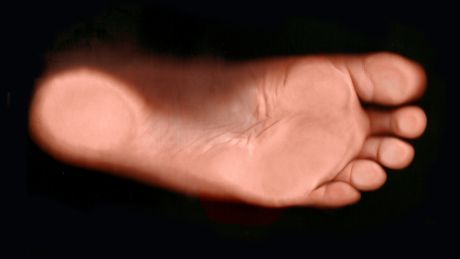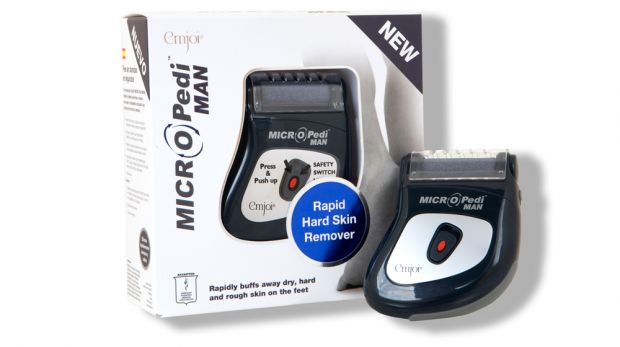The Top 10 Foot Injuries And Problems
And what to do about them

All injuries are quite literally a pain, but with most knocks and niggles you can at least avoid some of that pain by taking the load off the part of the body that’s suffering. It might mean avoiding the gym for a couple of weeks or sticking your arm in a sling, but at least you won’t be suffering so much on a day-to-day basis.
This is not something that’s usually an option with foot pain. Unless you’re able to stay in bed until the issue goes away you are going to be using your feet every day, which means the pain is always there with you. And that’s no fun at all, so it makes sense to do your best to avoid foot injuries.
The best way to do that is to identity any minor existing or potential foot issues early and take action to ensure that they don’t become major problems. This guide to identifying and fixing the ten most common foot problems will help.
1. Blisters
Research by the College of Podiatry shows that 90% of foot pain is caused by footwear, and the second most common reason to seek help for feet is blisters. The single best way to prevent the friction between shoe and foot that causes blistering is to make sure shoes fit properly – meaning they are not so narrow they squeeze the foot and that you have a good, clear 1cm between your longest toe and the tip of the shoe.
Repairs: Use Vaseline or foot balm to protect your skin from chafing. Try a specialist product like Eucerin Dry Skin Intensive Foot Cream (£8.80) or a fragranced one, such as Burt’s Bees peppermint foot lotion (£12.35), which stops them whiffing as well. If you do get a blister, never pop it. Cover it in a plaster and if it bursts, apply antiseptic.
2. Fungal infections
According to research from the National Institute of Health 25% of people have a fungal infection of the foot at any given time. These can be intensely itchy and cause white, soggy skin or dry, cracked skin between the toes, or reddening and blistering on the rest of the foot. Fungal infections can also spread to the toenails causing the nail to thicken and yellow.
Repairs: Wash feet daily with warm-to-hot water and dry them carefully using a different towel from the rest of your body. Apply anti-fungal talc or cream. The warm, dark and sweaty environment of shoes is the ideal breeding ground for the fungus, so avoid airless trainers and choose a sock that keeps them as dry as possible, such as those that combine cotton or wool with Coolmax fibres. There’s no point sorting your feet out and then reinfecting them in damp shoes so alternate footwear daily (they take 24-48 hours to dry completely). Airing your feet is really important and when they are a bit more sweaty than usual after a run or workout and you want speed up the drying process, spray them with surgical spirit.
Sign up for workout ideas, training advice, reviews of the latest gear and more.
3. Corns and calluses
Corns are concentrated areas of hard, dead skin, which arise as a result of pressure usually over a toe joint. Calluses are areas of dead skin on the sole of the foot.
Repairs: Keep them at bay by sloughing off hard skin using a pumice stone gently in the bath, and by wearing properly fitted footwear with extra room in the toe area. Steer away from corn removing solutions and medicated pads and never cut away dead skin with a knife as this can sometimes increase irritation and discomfort. Favour doughnut-shaped pads for corns on the top of the foot. The Micro Pedi Man (£15) is a mini-sander for feet, and is great for removing dry skin and getting rid of corns and calluses. It creates a snowstorm of skin as it buffs the old skin off, so don’t get carried away with your sanding.

4. Heel pain
There are many causes of heel pain. You may have a heel spur, which is a bony growth on the heel, or it could be that one of the tendons that connects to the heel is inflamed due to overuse – known as achilles tendinopathy, and something that’s common in runners. The discomfort can be gradual or flare up after a tough exercise session.
Repairs: In the first instance treat by icing, applying a compression bandage and keeping it elevated. If the pain persists, see a podiatrist. When it comes to achilles tendinopathy in particular the latest recommendations from physiotherapists advise against complete rest. In fact exercising the tendon makes it stronger so it can handle the load of your exercise. You can do this through calf exercises like the calf raise.
5. Back pain
Back pain affects 40% of the population. A 2013 US study revealed that Americans with flat feet are 50% more likely than those with normal or high arches to develop low back pain. Not all back pain is down to foot problems, but even a short amount of time in the wrong shoes can cause stress and pain to your vertebrae and the soft tissues that support them. Walking the wrong way can cause sciatica, bulging discs and other degenerative spine disorders.
Repairs: The shoe heroes here are properly supportive ones, such as a well-fitting trainer with insoles, and failure to get your shoes fitted properly can lead to months of pain and days lost at work.
6. Broken toe
A broken toe is one of the most common fractures. They can occur due to dropping heavy objects on them or being stubbed.
Repairs: Only go to A&E if your toes are cold and numb, turn blue, or the toe is bent at an angle or has an open wound. If pain and swelling doesn’t clear up after a week or so, consult a doctor and he may send you for an X-ray, but the pain and the treatment are pretty much the same whether the toe is broken or not. Keep the injured foot elevated as much as you can; if it is the little toe, strap it to the next one to create a natural splint. All footwear is painful with a broken toe, but a shoe with a stiff sole, such as a walking or hiking boot, will help your mobility.
7. Damaged metatarsals
The metatarsals are the five long bones of the mid-foot and even though, unlike your toes, they are fixed and encased in your foot they are still prone to acute fracture (due to sudden impact) and more prone to stress fracture (due to repeated strain during sports or activity). Metatarsalgia is the most common reason for the wearing of the moon boot and particularly common in runners and footballers.
Repairs: Overpronation, or excessive flattening of the foot, can lead to stress fracture and this can be avoided by making sure that you are fitted by a specialist with the right sports shoe both for your foot and your chosen activity. Orthotics and shock-absorbing insoles can also help prevent pronation and stress fractures.
8. Arch pain
The plantar fascia is the ligament that connects your heel bone to your toes and supports the arch of your foot. If it is over-stretched this can cause inflammation and pain in the arch of your foot. This is a very common injury in runners and a waking nightmare that causes you to feel pain with every step.
RepairsSee related: Flip-flops, sandals, Crocs and canvas plimsolls have little or no arch support, and wearing shoes like these all the time can lead to arch pain, so alternate your footwear. The pain is often extreme in the morning when you first get out of bed, so try doing some foot exercises before putting foot to ground.
Foot stretches can keep the achilles tendons and the plantar fascia from getting too tight and relieve some of the pain, so we’ve put together five stretches that can help with plantar fasciitis. Rolling a spiky massage ball under the arch of your foot is also a treatment worth trying.
See related
- Common Running Injuries And What To Do About Them
- What Are Custom Insoles And How Can They Help Runners?
- Plantar Fasciitis: How To Spot, Treat And Prevent This Runner’s Nightmare
9. Verrucas
Verrucas are warts that spring up on the bottom of the feet and around the toes. They are pretty harmless but can be painful. Verrucas are caused by the Human Papilloma Virus (HPV), which is highly contagious and thrives in damp places such as changing room floors and communal showers.
Repairs: You could catch a verruca just by walking across the same floor as someone who has one, so always wear flip-flops or plastic shoes when changing after the gym or swimming. If you get one, wear special protective verruca socks when you swim. Folkloric types recommend cleaning with vinegar then applying duct tape for several days to drive them out.
10. Ingrown toenails
This happens if a toenail cuts into the flesh of the toe, which then becomes swollen, painful and can become infected.
Repairs: Avoid them by cutting nails straight across and never cutting them too low at the edge or down the side of the nail. You will need to wear open-toed shoes or sandals while it heals. If pain and swelling continue, see a podiatrist who will remove the spike of nail and cover the wound with an antiseptic dressing.
Bridget was a freelance journalist who contributed features to the print edition of Coach in 2016.
